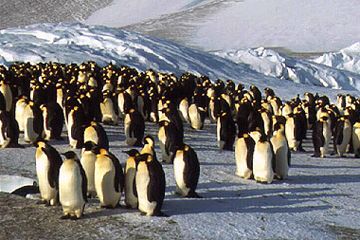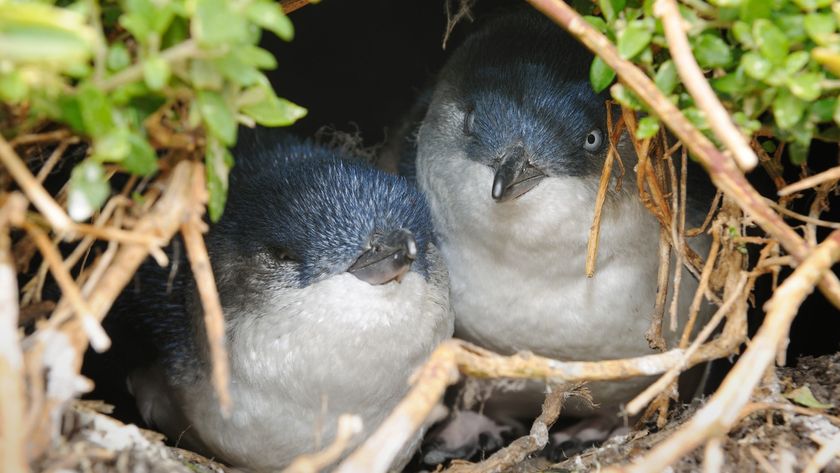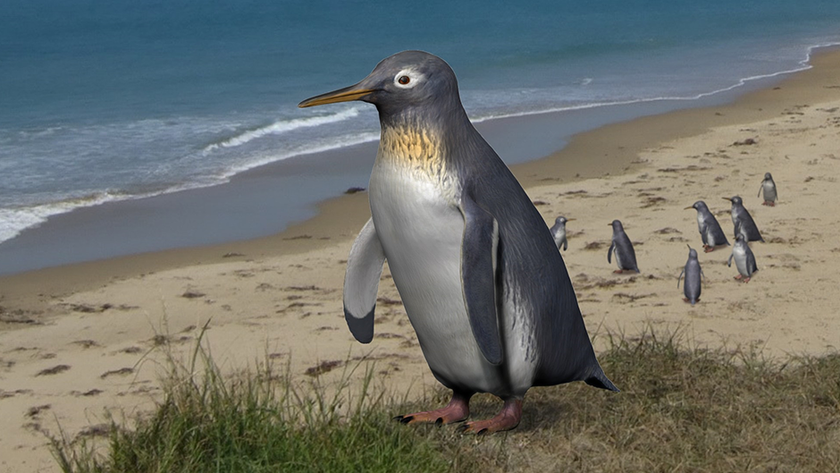Penguins: The Math Behind The Huddle

(ISNS) -- In the icy freeze of Antarctica, Emperor penguins huddle for warmth – and they stay toasty even though they constantly rotate positions in the scrum. Now, researchers have modeled the workings of the huddle, looking at the system through the lens of fluid dynamics.
Francois Blanchette, an applied mathematician at the University of California, Merced, says that it took a bit of serendipity to bring him into the topic.
"I was watching those penguin movies and got to thinking: I work with similar things," Blanchette said. "You can see the wind blowing in all these movies, and you can see snowflakes -- I thought maybe there's a way to get involved in the idea of penguin huddling."
Biologists have long observed how hundreds of penguins gather together in order to resist the Antarctic temperatures of -60 F and gusts of 100 mph. Other researchers showed that the penguins move from place to place within the packed group, moving outside penguins to the warmer spots and dispersing the heat loss.
Inside the huddle, temperatures have been known to reach 70 degrees F. Huddling is particularly important, as the penguins don't eat for up to 115 days and need to conserve as much energy as possible.
Blanchette took the idea a step further and created math models of the shape and dynamics of the huddle. He found that when penguins try to maximize their warmth -- the coldest ones move to the best available spot -- and the huddle takes the form of a cigar.
Blanchette soon realized that the oblong shape didn't match up with what he saw in penguin movies, so he added another factor: random heat loss to every penguin. That created a rounder huddle with a smattering of holes in it, with a bit of elongation in the direction of the wind.
Sign up for the Live Science daily newsletter now
Get the world’s most fascinating discoveries delivered straight to your inbox.
"It's not surprising that there is a lot of randomness, as penguins are not perfectly rational beings," said Blanchette. His research, done with two students, was published Friday in the online journal PLoS ONE.
The team was surprised to find that even though each penguin was out to help itself, the cold ended up being shared nearly equally over the whole group.
"If you wanted to design a process that's fair, this is a close approximation," said Blanchette.
Barbara Wienecke, a biologist with the Australian Antarctic Division who studies penguins, said the model was interesting. She added that reality may be more complex than the model, which assumes there are few gaps in the huddle, suggests.
"Huddles are highly dynamic and not as symmetrical as one might expect," Wienecke said, who had a biological shape in mind for the huddle. "The outline of a huddle can make it look more like an ameoba than a circle so to a point openings often exist, depending on the number of birds in a huddle."
Penguins huddles aren't the only shape-shifting animal grouping -- other biological masses have dynamics that can be modeled like fluids, said Blanchette. He points to colonies of bacteria that change shape in response to food or toxins.
In addition, the model could be programmed into robots who need to swarm and huddle to survive.
"Imagine a group of robots caught in a sandstorm, and they might want to rotate who is exposed," Blanchette said. A biology-based model could prescribe behavior to maximize survival for a group faced with a nasty environmental situation.
Katharine Gammon is a freelance science writer based in Santa Monica, Calif., and writes for a wide range of magazines covering technology, society, and animal science.
Inside Science News Service is supported by the American Institute of Physics.













